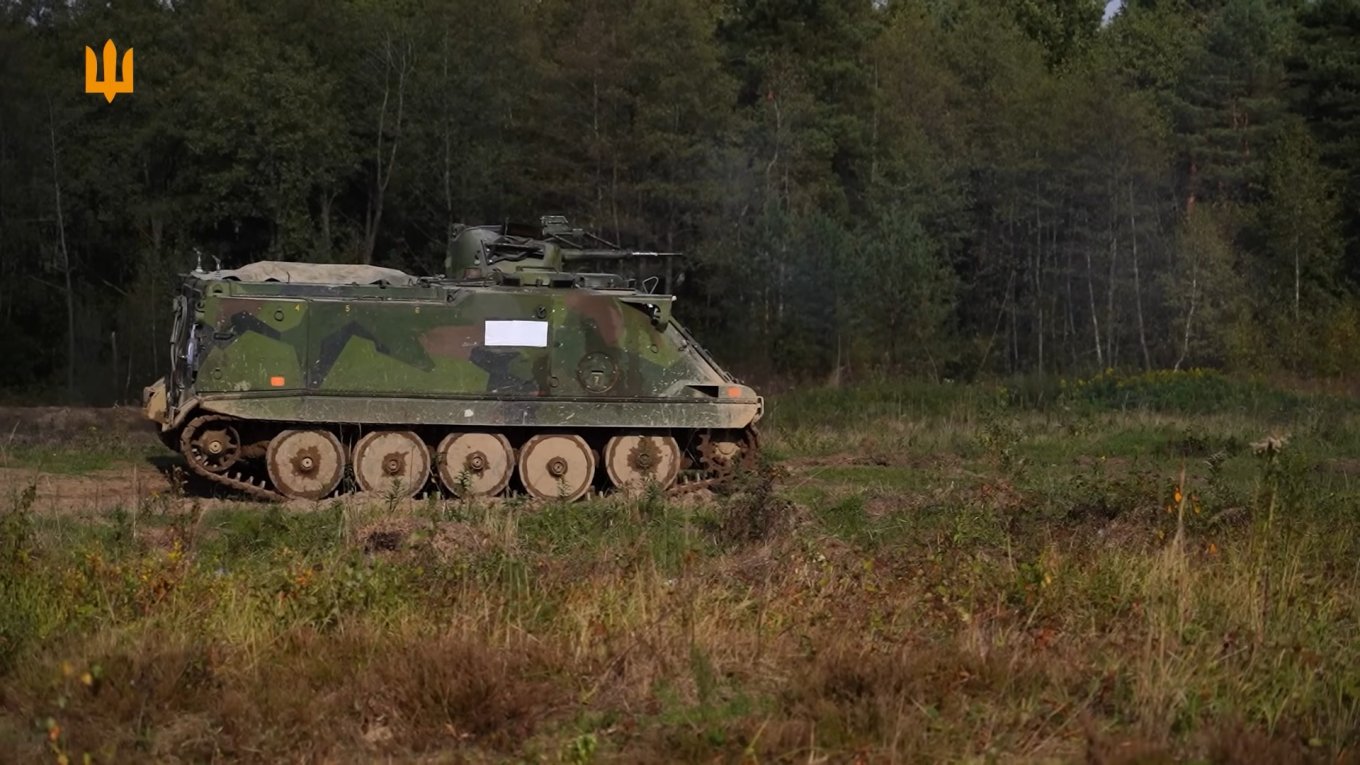Ukrainian Land Forces Command has published a video showing recruits train with the new Swedish armored personnel carrier, the Pansarbandvagn 302, or simply PBV 302. The entire stock of these combat vehicles — around 180 in various operational conditions — was donated by Sweden in May 2024, this is the first time Ukrainian soldiers are seen using them.
Many Ukrainian military servicemen appearing in the video all praise the ergonomical characteristics of the vehicle. Featured in the footage is the PBV 302A modification.
Read more: What Kind of Vehicle is Pbv 302, Which Are Transferred by Sweden to Ukraine, How Many of Them Are Available
For example, the door in the back of the vehicle is an important element where the crew disembarks during the mission, where evacuated soldiers and ammunition get through. Not to waste a second, it has optional special hooks attached to the bottom for quick and handy closure, albeit not as airtight as shutting the hatch normally.


There are also long hatches on the top of the hull: when creating the vehicle, the designer's idea was to enable the crew to open fire without leaving the vehicle. "It's hard to say how relevant it is now, in modern conditions, because of the huge number of drones but it was a necessity back in the day," the reporter notes. The hatches are opened by a hydraulic system from the crew commander's seat, but there's not much besides these few levers and small armored glass loopholes 360° around him. As explained, the Swedish engineers expected that the commander would leave the vehicle alongside the crew upon arrival on the spot.
Before being allowed to the vehicle, soldiers learn the technical base, then practice with simulators. However, operating it is quite easy: not much harder than driving a car, just with levers instead of the steering wheel, says crew member Vasyl.

Many of the PBV 302 operators in training have prior combat experience with other armor yet they were impressed with the vehicle's mobility: one said it could smoothly overcome obstacles in 3rd or 4th gear without as much as slowing down. Some compare the PBV 302 to Ukraine's most common infantry fighting vehicle, the BMP, noting the fact you don't even need to leave the vehicle to inspect or provide maintenance to the engine — everything is accessible from inside the cabin.
"Compared to a BMP, you had to take half the engine apart just to take off the starter. Here, everything is easier to access, it's cool …It runs smoother," says a PBV 302 driver, call sign "Kuba."

It's also much harder to make a PBV 302 throw a track — a common malfunction when the drive sprockets lose alignment with the caterpillar track, usually due to incorrect tension. As another driver in the video pointed out, "What's great about the Swedish vehicle is that the tracks can be tightened right from the driver's cabin. We can tighten or loosen them based on the situation we're in."
The main armament of the PBV 302 is the Akan m/47D (Hispano-Suiza HS 804) automatic cannon, caliber 20mm. It's a rapid fire anti-aircraft gun but unlike many other weapons in this class, it is fed from magazines of 30 shots each, fires them out at 8 shots per second. It can engage targets on the ground or at altitudes up to 2 kilometers. However, shooting an airborne enemy requires the gunner to open the hatch and operate the gun from on top of the turret using a different aiming device, like in the screenshot below:

Overall, the Swedish PBV 302 became a versatile reinforcement to the Ukrainian Army, with capacity to carry up to 8 passengers or four wounded on stretchers, providing fairly powerful protection against 20mm round hits. More raw specifications of this vehicle Defense Express listed in a separate article.
Read more: Germany Completes Training of Fourth Ukrainian Patriot Missile Crew, But Has Given Only Three Systems














